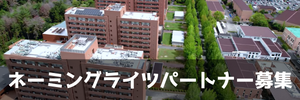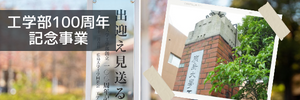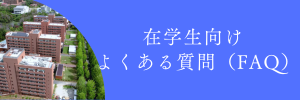(English announcement can be found in the latter half of this notice.)
広島大学バイオマスプロジェクト研究センターと中国地域バイオマス利用研究会の共催で広島大学バイオマスイブニングセミナーを開催しています。バイオマスに関する基本的な考え方から最先端の情報までをカバーして、この地域におけるバイオマスの活動に資することを目的とするものです。第55回を以下の日程で開催しますので、ご参集下さい。
日時 2017年7月19日(水)16:20~17:50
会場 広島大学東広島キャンパス工学部110講義室
http://hiroshima-u.jp/eng/access/lectureroom
http://hiroshima-u.jp/eng/access/building
http://hiroshima-u.jp/access/
プログラム
解説 広島大学大学院工学研究科 教授 松村 幸彦
講演 広島大学大学院工学研究科 M2 Tanawan CHALERMSAKTRAKUL
「キシロースの酢酸添加による水熱処理」
ヘミセルロースのモデル物質であるキシロースの水熱ガス化は、連続流動反応器を用いて酢酸の存在下で高温高圧下(350,400,450℃、25MPaまで)で行いました。酢酸は有機化合物の一つであり、環境に優しく、低腐食性であり、またヘミセルロースガス化の副生成物でもあるので、キシロースの超臨界ガス化における各反応の挙動をよりよく理解する触媒として選択されました。本研究では、酢酸を添加した場合と添加しない場合のキシロース分解の反応速度定数を比較することを目的としました。滞留時間の影響を決定するため0.5から5秒まで変化させました。キシロースの濃度は1.5重量%の酢酸と混合した1.5重量%でした。キシロースの超臨界ガス化で酢酸を添加するとラジカルスカベンジャーとして作用してH+となり、ラジカル反応であるレトロアルドール反応と炭素ガス化生成が抑制されました。一方、キシロースとキシルロースのフルフラールへの脱水は著しく促進されました。亜臨界と超臨界とは小さな違いがあります。亜臨界条件下では酢酸の効果でキシルロースからの脱水反応の方がシロースからの脱水反応より早く促進させることができると分かります。一方、超臨界条件下では酢酸の効果でキシロースからの脱水反応の方がシルロースからの脱水反応より早く促進させています。
講演 広島大学大学院先端物質科学研究科 D3 Mattana TUNCHAI
「植物病原菌の挙動を攪乱する革新的な感染制御手法」
Ralstonia solanacearumは世界中の各種商業作物を枯らす植物病原菌です。細菌の走化性(化学物質への走性行動)により、病原菌が植物根周辺に引き寄せられて移動します。これが植物枯死の初期段階として重要であることと考えられています。そこで、この走化性行動を攪乱することにより植物への感染を遅延、抑制することができるかもしれないと考えました。R. solanacearumが誘引、もしくは忌避する物質を見いだした後、トマト植物への感染を抑制する物質の検討を行いました。その結果、植物病原菌が根に誘引される物質の一つであるリンゴ酸が感染を抑制する有望な物質であることがわかりました。
講演 広島大学大学院先端物質科学研究科 M2 Luo GONGLINFENG
「低温菌シンプル触媒によるカルボン酸生産」
バイオマスから付加価値のある化学品を生産するのは石油に依存しない化学工業を創出できる有望な手段です。有機酸、特にTCA回路に含まれるカルボン酸は化学工業で広く応用できます。現在工業的に生産されているカルボン酸の種類は限られています。カルボン酸は色んな代謝産物の中間産物や前駆体であり、細胞内での大量蓄積やトランスポートは困難であるため、宿主由来の代謝酵素がカルボン酸の高生産を阻止しています。私達は30度以上で生育不可能の低温菌を宿主として生体触媒を構築しました。宿主の代謝酵素を失活させることと膜透過性を改変することによってより良い収率と基質との接触を改善して、効率的なカルボン酸生産触媒の構築を進めています。
講演 広島大学大学院工学研究科 D3 Paksung NATTACHA
「超臨界水におけるグルコースの分解及ぼすフェノールの影響」
バイオマスを効率よくエネルギーに変換する技術の一つに超臨界水ガス化があります。この技術は高温高圧条件下での熱水反応を用いたエネルギー回収法で、水中で処理を行うので、原料のバイオマスが水を含有していても問題はなく、高い反応性を持っています。さらに、乾燥プロセスが必要でなく、水素収率が高いため、有望な技術であります。本研究ではバイオマスのモデル物質としてグルコースを用い、超臨界水におけるグルコースの分解及ぼすフェノールの影響に注目しました。実験条件は反応温度350-400 ℃、圧力25 MPa、滞留時間1-40 sとしました。炭素収支をとるため、ガス、液体、固体中の炭素量を測定し、反応速度定数をそれぞれ求めました。
司会 広島大学大学院工学研究科 客員研究員 Obie FAROBIE
なお、18:00より意見交換会(参加費 800円)を開催します。ご都合の付く方はこちらにもご参加下さい。
The 55th Hiroshima University Biomass Evening Seminar
(The16th Hiroshima University ACE Seminar)
Biomass Project Research Center, Hiroshima University, and HOSTY Association are co-organizing the Hiroshima University Biomass Evening Seminar. This seminar covers topics from the fundamentals of biomass to the latest information so that it can contribute the activities on biomass in this district. The 55th seminar will be held as follows. Please join.
Date & Time:Wed .19 Jul., 2017 16:20-17:50
Place: Engineering 110 Lecture Room, Higashi-Hiroshima Campus, Hiroshima University
http://hiroshima-u.jp/eng/access/lectureroom
http://hiroshima-u.jp/eng/access/building
http://hiroshima-u.jp/access/
Program
Commentary: Yukihiko MATSUMURA
Professor, Institute of Engineering, Hiroshima University
Lecture: Tanawan CHALERMSAKTRAKUL
M2 Student, Graduate School of Engineering, Hiroshima University
“Novel hydrothermal treatment of xylose with acetic acid addition”
The hydrothermal gasification of xylose, as a model substance of hemicellulose, was carried out at high temperatures and pressures (350, 400, 450 °C, 25 MPa) in the presence of acetic acid by using continuous-flow reactor. As acetic acid is one kind of organic compound, environmental friendly, low corrosiveness, and also byproduct of hemicellulose gasification, it was chosen to be the catalyst to understand more about the behavior of each reaction in supercritical gasification of xylose. This study aimed to compare the reaction rate constant of xylose decomposition with and without acetic acid addition. The experiments were investigated to determine the influence of residence time varied from 0.5 to 5 s. The concentration of xylose was 1.5 wt% mixed with 1.5 wt% of acetic acid. When acetic acid was added in supercritical gasification of xylose, it gave radical scavenger effect and provided H+, so the retro-aldol reaction and carbon gasification production, which are radical reactions, were be suppressed. Meanwhile, the dehydration of xylose and xylulose to furfural was be promoted significantly. The different between sub- and supercritical conditions is that xylulose yield decreased with increasing acetic acid at subcritical, but at supercritical xylulose increase with increasing acetic acid. At subcritical, dehydration of xylulose to furfural was faster than that of xylose to furfural. In contrast, at supercritical, furfural was produced from xylose more than xylulose.
Lecture: Mattana TUNCHAI
D3 Student, Graduate School of Advanced Sciences of Matter, Hiroshima University
“ Novel method to control bacterial wilt by disturbing its ability to locate host root ”
Ralstonia solanacearum causes bacterial wilt disease in many economically important crops worldwide. Directed-movement, called chemotaxis, is essential for R. solanacearum to locate the plant root which is considered as a critical early step for host invasion. Therefore, disturbing its chemotaxis system may be able to delay or even suppress the host infection. After having gained knowledge of its attractants and repellants, we tested suppression effect of these compounds on tomato infection. Consequently, we found that malate, identified as one of signal compounds attracting the pathogen to host root, is a promising bacterial wilt control agent.
Lecture: Luo GONGLINFENG
M2 Student, Graduate School of Advanced Sciences of Matter, Hiroshima University
“Carboxylic acid production by psychrophlie-based simple catalyst”
Production of valuable chemicals from biomass has been regarded as a hopeful approach to reduce the reliance on petroleum chemicals. Organic acids, especially carboxylic acids contained in TCA cycle(tricarboxylic cycle) have a very board application in chemical industry[1] due to their founctioal groups. There are only several carboxylic acids which are produced commercially by fermentation or biotransformation. Since a lot of carboxylic acids are intermediates or precursors for metabolisms, the diffculties on over accumulation in cells and transportation through cell membranes hampered the development of efficient production process. In our research, we conducted a biocatalyst based on psychrophile which is unable to grow and reproduce over 30 ℃ due to inactivited enzymes and membrane damage. when the reaction was carried at over 30 ℃, the permeability change caused by membrane damge gave the mesophilic enzymes that we introduced into the host a better access to the substance which leaded to a faster production of carboxylic acid.
Lecture: Paksung NATTACHA
D3 Student, Graduate School of Engineering Hiroshima University
“Effect of Phenol on the Glucose Decomposition in Supercritical Water”
Supercritical water (SCW) is a promising medium for biomass conversion into chemicals and fuel gases. It has specific properties that make it possible to dissolve biomass homogeneously. Lignocellulosic biomass is a candidate as feedstock because of its abundant availability. Glucose is often used to represent cellulose in the lignocellulosic biomass. It produces tarry material and char at low temperature, but the production is demoted in SCW. Phenol is a derivative of lignin and is believed to provide radicals in SCW. When biomass is treated in SCW, interaction between cellulose and lignin takes place, which should be modeled by interaction between glucose and phenol. However, this interaction has not been studied in detail. The purpose of this study is to determine the interaction. Mixture of glucose and phenol was fed to continuous reactor. Interaction resulted in large increase in tarry material.
Chair: Obie FAROBIE
Visiting Reseacher, Institute of Engineering, Hiroshima University
We will hold the discussion meeting from 18:00 (800 JPY needed). Join this meeting, too if you are available.


 Home
Home









